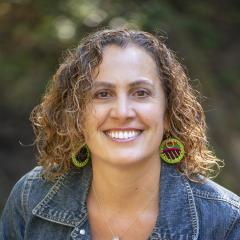Switzer op-ed on Central Valley drinking water
Editor's Note: The following op-ed was one of the follow-ups to the California Central Valley Switzer spring retreat. It was an effort for a group of fellows to get an op-ed published in the Sacramento Bee in connection with a series of hearings on Irrigated lands in California.
Since the Pacific Institute was successful in garnering media attention for its report on drinking water quality in the region at the same time, this op-ed did not get published (too many other op-eds competing). In the spirit of keeping a conversation alive, we offer it here and invite your comments on the issue. The authors, Fellows Carolina Balazs (2009), Peter Vorster (1990), and Steve Rothert (1994), all remain deeply involved with the issues raised.
March 31, 2011
The polluted water that flows from taps in many small Central Valley communities captures a troubling irony of California water policy.
In the community of Tooleville, amidst vineyards and citrus groves near Visalia, nitrate contamination in the local water system exceeds legal limits. A few hundred yards from the edge of town, the Friant-Kern Canal flows with Sierra Nevada snowmelt bound primarily for farm fields.
The canal carries more than enough water to supply the cities of Stockton, Merced, Fresno and Bakersfield combined. But the residents of Tooleville, many of them farm workers, are not allowed to drink the water in the canal. Instead, because their homes are supplied with contaminated groundwater from a local well, they must spend a substantial fraction of their monthly income on bottled water to protect against exposure to harmful contaminants, including nitrate.
The story is similar in dozens of small San Joaquin Valley communities: Taxpayer-supported dams and canals channel billions of gallons to agriculture, past the doorsteps of the people whose labor makes farming here possible. Farming not only uses this pristine Sierra water, it in turn pollutes Valley residents’ primary drinking source, as nitrogen fertilizers and pesticides percolate into the groundwater.
Nitrate ingestion at levels above federal standards can reduce an infant’s ability to carry oxygen in the bloodstream, causing “blue baby syndrome,” which can be fatal. Studies have also shown that high nitrate levels can cause reproductive harm to women and may be associated with thyroid cancer, among other health effects.
On April 7, California can take a step to address this injustice. At a meeting in Rancho Cordova, the Central Valley Regional Water Quality Control Board is due to adopt regulations that will, for the first time, put controls on the contamination of groundwater aquifers by irrigated agriculture.
There’s a risk, however, that the board will adopt rules that are too weak to have a significant impact. The most recent plan recommended by the board’s staff does not specify water quality objectives that farms must meet. Nor does it call for gathering basic information — such as the quantity of fertilizer used on an individual farm — that can help track contamination sources. Water-quality monitoring and enforcement would fall primarily to consultants who would be hired by the agriculture industry and not be legally responsible to the board.
The agriculture lobby has protested that more stringent regulation would be costly. But as a report released in March by Oakland’s Pacific Institute showed, nitrate pollution carries steep costs of its own, to both rural communities and taxpayers.
While the San Joaquin Valley has just 10 percent of the state’s population, it is home to nearly two-thirds of the Californians who are supplied by water systems that violated federal standards from 2003 to 2007. As in Tooleville, many households in these contaminated areas pay twice for water – once with their utility bill, and once for bottled water or expensive filtration systems. In one community surveyed for the Pacific Institute report, the total cost for water averaged 4.4 percent of median household income – nearly three times the federal affordability threshold.
The rest of us pay as well. Nearly 95% of the San Joaquin Valley’s population relies on groundwater. The state grant program that aids small communities with serious water supply problems already has a backlog of projects totaling more than $150 million, and that does not include communities that have not yet applied for state assistance. The tally stands to rise. Nitrates can take years to percolate from the surface down into drinking-water aquifers. Long-term monitoring suggests that groundwater nitrate levels are increasing, meaning that the list of communities with water troubles is only going to grow.
The water quality board needs to recognize that taking strong action now to ensure that our drinking water sources are protected can help avert huge costs later – and protect all Central Valley residents’ basic right to clean and affordable water.
Carolina Balazs is a doctoral candidate at UC Berkeley
Peter Vorster is a hydrogeographer with the Bay Institute
Steve Rothert is the California regional director of American Rivers


